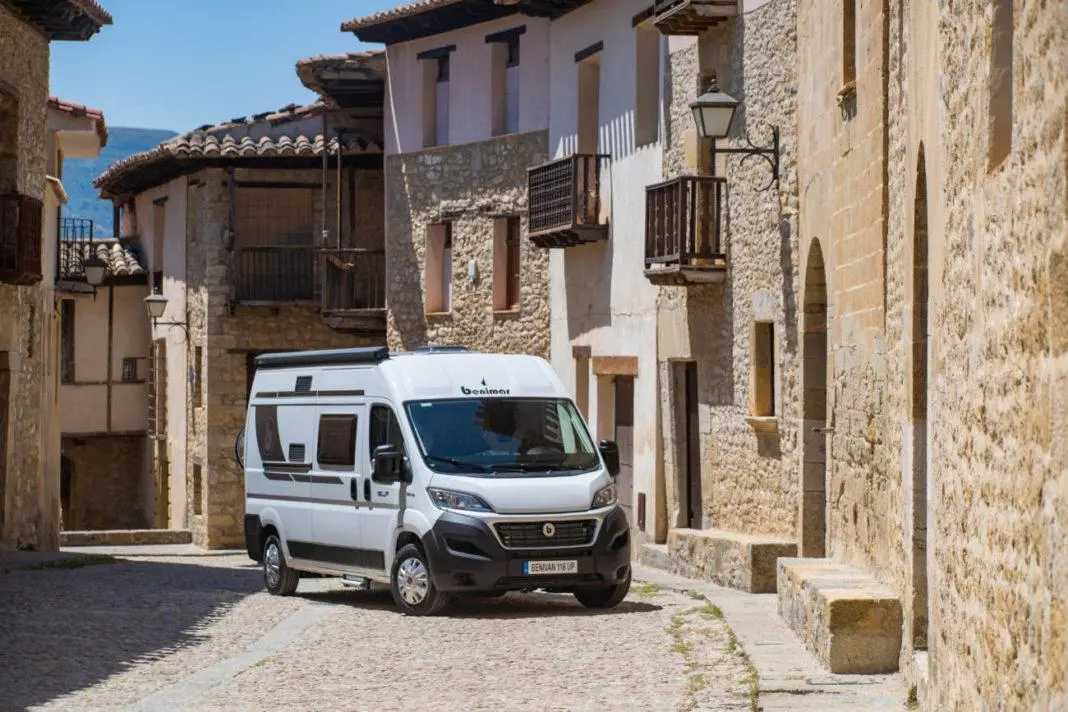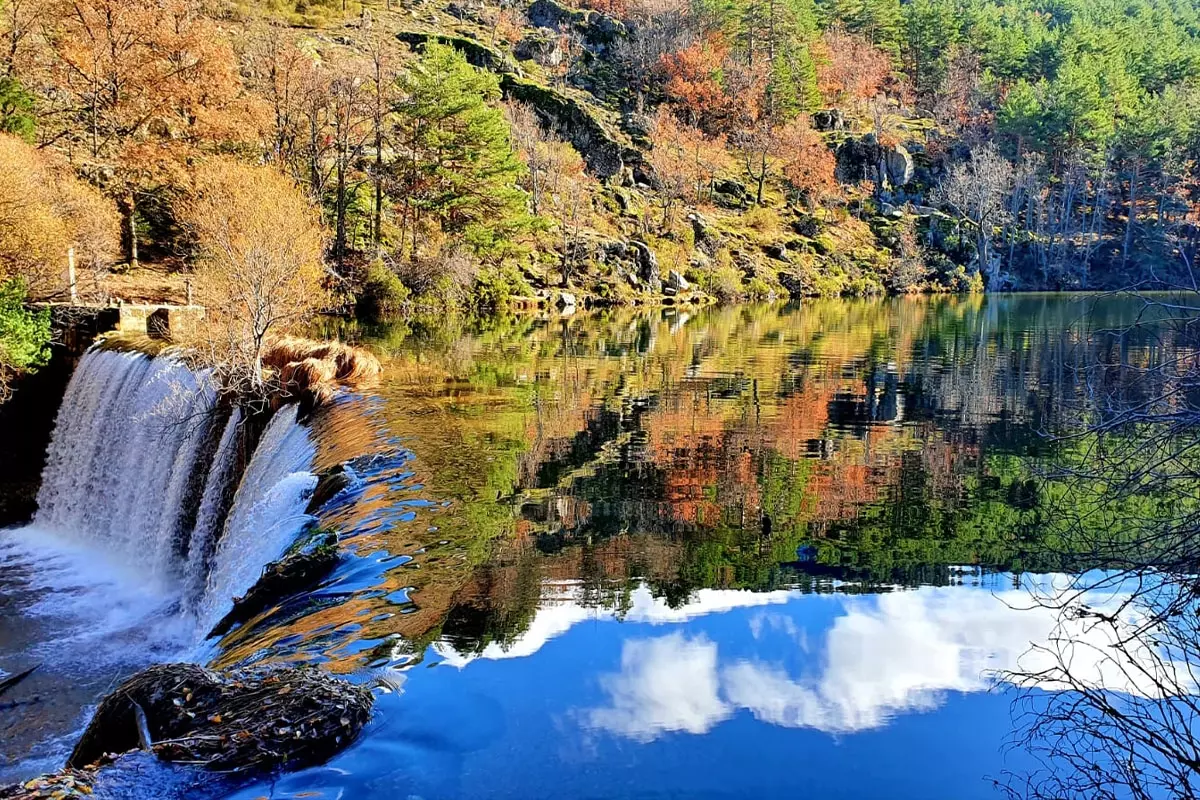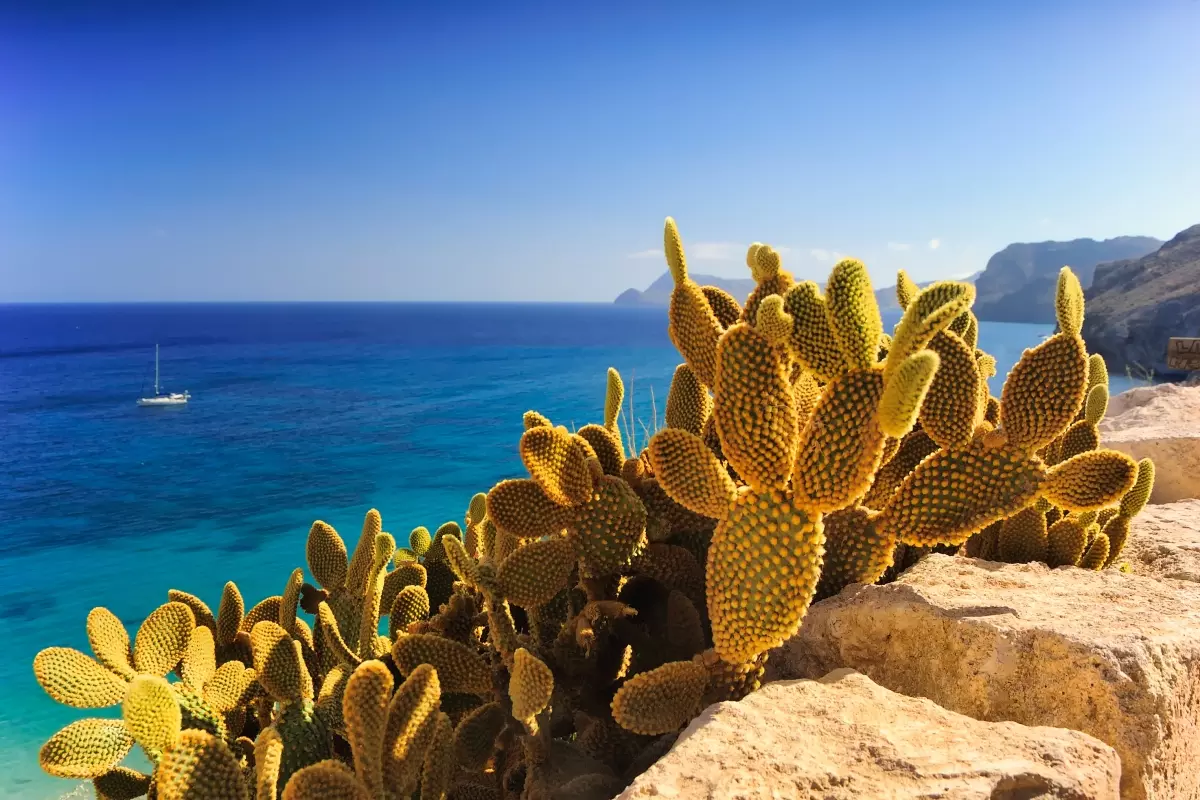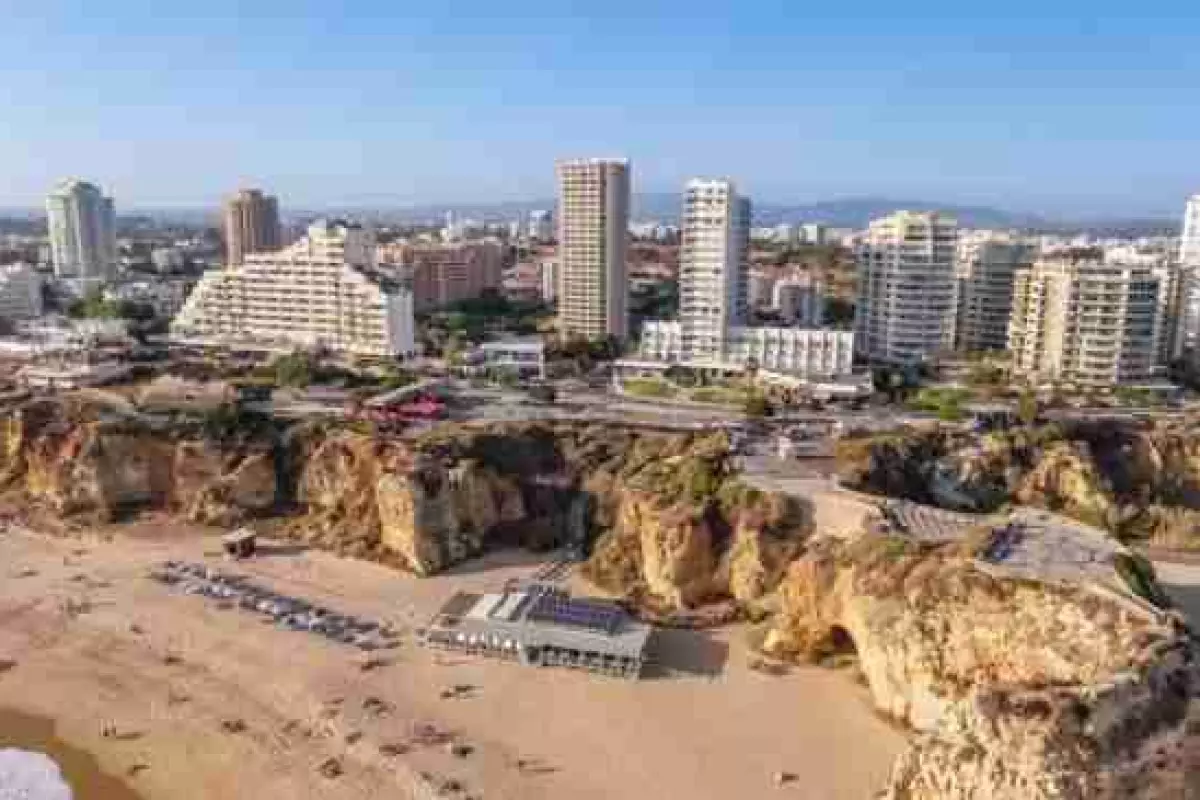In addition to the city itself, beautiful capital of Spain, the Community of Madrid offers numerous options to escape and enjoy a real camper experience away from the city. Get on the road by renting one of our vans and get ready to discover one of the most beautiful regions of Spain. In addition to the capital, Madrid has a large number of natural sites and stunning locations to visit.
Below, we propose a possible route to make with your rentend campervan and get to know better the Community of Madrid.
In this article we propose a wide selection (up to 17) of charming places. Places that we believe you have to visit at least once in your life. Some of them are well known, others not so well known. We hope you like it and, please, if you think something is missing, do not hesitate to tell us.
The proposed route has a duration of 3 days (2 nights). We know it is a short time, especially considering that there are many towns to see and many things to do. We are sometimes a bit quick at sightseeing: we park, take a quick walk, take some pictures and then we are on our way... which is not always the most advisable thing to do.
But, for those of you who like to enjoy the places where you go and want to really take advantage of this route, we recommend you to take as much time as you need. Why not? A day and night for each town.
Campervan hire Madrid: make the most of your camper experience.
Camper van route through the Madrid Region
DIA 1 - 195 Km – 2 hours y 59 minutes.
MADRID – VILLAREJO DE SALVANES – COLMENTAR DE OREJA – CHINCHON – NAVALCARNERO – SAN MARTIN DE VALDEIGLESIAS
DIA 2 - 130 Km – 2 hours y 42 minutes.
SAN MARTIN DE VALDEIGLESIAS – SAN LORENZO DE EL ESCORIAL – CERCEDILLA – MANZANARES EL REAL – RASCAFRIA
DIA 3 - 213 Km – 3 hours y 59 minutes.
RASCAFRIA – BUITRAGO DEL LOZOYA – HORCAJUELO DE LA SIERRA – LA HIRUELA – PUEBLA DE LA SIERRA – PATONES – TORREMOCHA DE JARAMA – TORRELAGUNA – TALAMANCA DE JARAMA - MADRID
Route Map:
Where to spend the night with your camper motorhome in the Community of Madrid
Overnight motorhome areas
Unfortunately, the Community of Madrid is not one of the Communities in which a large number of services and facilities are available for ACs. In fact, we only know of a couple of parking lots in the entire region that act as overnight parking areas. These are:
- Área Autocaravanas Pinto: Calle Poeta José Hierro, s/n, 28320 Pinto, Madrid
- Parking de Valdebernardo: Bulevar de Jose Prat, 28032 Valdebernardo, Madrid
- Área de Autocaravanas El Bolao: El Bolao, 6-617, 28413, Madrid
Campsites in the Community of Madrid
Given this lack of areas, it is possibly advisable, if you want to have all the necessary facilities for the tuning of the camper van, is to go to one of the, in this case yes, multiple campsites along the route. Here we suggest a few of them:
- Camping La Ardilla Roja: 28680 San Martín de Valdeiglesias, Madrid - campingardillaroja.es - +34 918 67 84 87
- Camping El Canto la Gallina: Travesía dos de Mayo, 1, 28295 Valdemaqueda, Madrid - elcantolagallina.com - +34 918 98 48 20
- Camping La Fresneda: km 19,500, M-608, 28791 Soto del Real, Madrid - fresnedacamp.com - +34 918 47 72 13
- Camping Piscis: Carretera M-625, 28729 Navalafuente, Madrid - campiscis.com - +34 918 43 22 68
- Camping Monte Holiday: Gargantilla del Lozoya y Pinilla de Buitrago, 28739, Madrid - campingmonteholiday.com - +34 918 69 52 78
- Camping El Picachuelo: M127 KM ,5 de El Berrueco a Cervera, Carretera, 7, 28192 El Berrueco, Madrid - sierranorte.com - +34 918 68 61 36
- Camping Osuna: Calle Jardines de Aranjuez, s/n, 28042 Madrid - campingosuna.com - +34 917 41 05 10
Places to visit with your camper van in the Community of Madrid
-
Villarejo de Salvanes in motorhome
It is the nerve center of the region of Las Vegas due to its privileged location. It is distinguished by its castle, a fortress of the Order of Santiago that is part of the Network of Castles of the Community of Madrid.
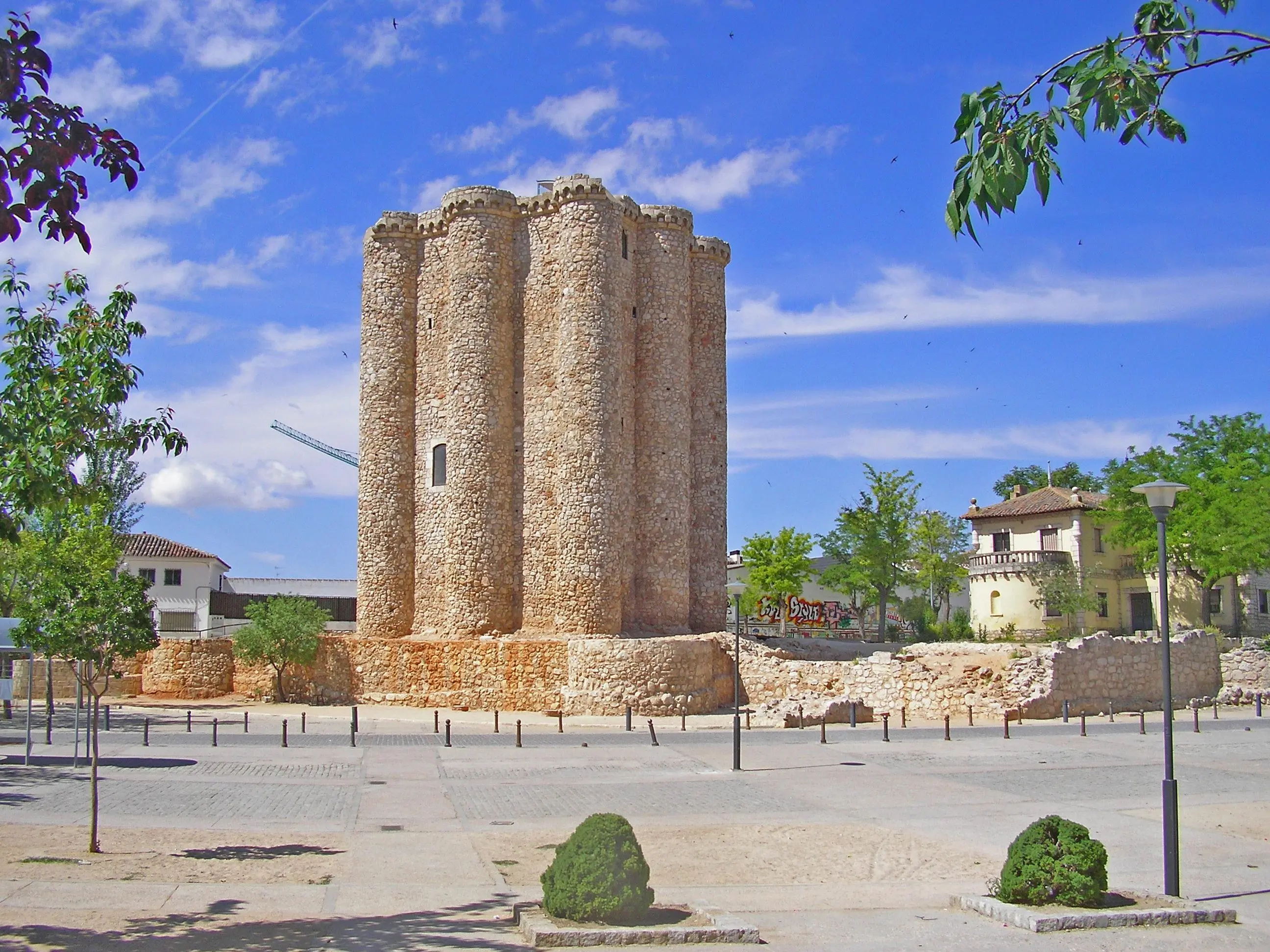
The first news that we have about the municipality is in the eleventh century. Specifically, reference is made to Salvanés and the condoning of the Valley of Salvanés by Alfonso VI to the church of Toledo. Even so, archaeological remains have been found that show the human presence in these lands from much earlier.
Since the XI century there were jurisdictional discrepancies and in the XIII century there is evidence of the existence of Villarejo. In 1240 the commander of Salvanés was Ramón Íñiguez and the master of the Order, Rodrigo Íñiguez. At the end of the 15th century, the Encomienda de Villarejo de Salvanés became the head of the Encomienda Mayor de Castilla. With the new administrative division, the town was incorporated into the province of Madrid, ceasing to belong to Ocaña and Toledo.
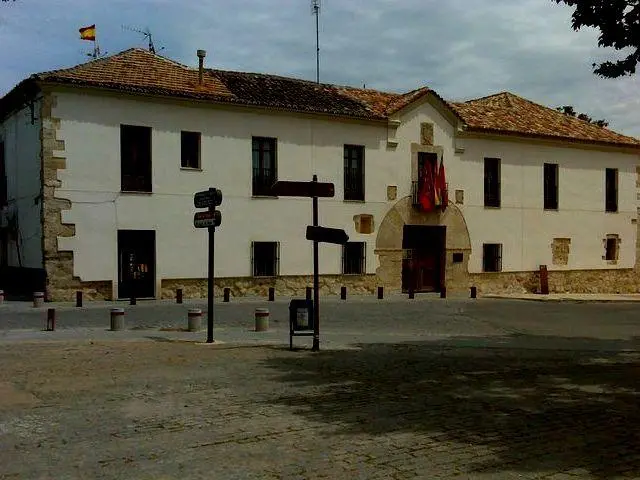
The natural environment of the municipality is crossed by the Tagus River, by numerous streams -some seasonal- and by the Estremera Canal. The steppe and some slight elevations of the land are the main characteristics of the landscape. This is completed with vineyards, olive groves, crop fields -mainly cereals and legumes-, native Aleppo pines, Mediterranean vegetation and mountain areas used as pastures. The most abundant fauna consists of birds, mammals, reptiles and insects.
The aforementioned crop fields were one of the main occupations of the population. In addition, there were other trades such as commerce, livestock -sheep, goats, pigs...-, beekeeping and industry. These activities had an impact on the municipal urban architecture. Nowadays it is still possible to observe rural-type houses and agricultural and livestock buildings, although there are recent constructions -especially from the 20th century- with urban and urban-rural characteristics. Also with that century the service sector and industry increased.
The artistic heritage of Villarejo de Salvanés is made up of different examples, of which the most outstanding are: The Castle, whose first enclosure was built at the end of the 13th century and to which later buildings were added. The complex had a marked defensive character and among its main elements were the fortress, the palace, the moat and the tower. Precisely, this one together with some remains of the wall are the only parts that are preserved today.
The Parish Church of San Andrés Apóstol is from the 14th century, although it was built on top of a building from the previous century. Since it was erected it has undergone several transformations, reforms and additions. Its exterior appearance is reminiscent of the fortress-churches. Another religious building in the municipality is the Convent of Nuestra Señora de la Victoria de Lepanto, built in gratitude for the results achieved in that battle, it is from the 16th century and also houses a church. Currently, part of the convent facilities are used as a school.
The Casa de Tercia -from the 16th century- is a reflection of the presence of the Encomienda Mayor de Castilla in Villarejo de Salvanés. The building, with two floors and a columned courtyard, was built with large walls following the traditional rural style. Among its most important uses were as a residence, grain storehouse and wine cellar. Over time it has undergone transformations and is currently used in the service sector.
Among the recent additions is the Cinema Museum, installed in the old Paris Cinema, which is the first museum of professional and technological cinema, not only in the Community of Madrid, but also in all of Spain.
Más información: www.turismovillarejodesalvanes.com
-
Colmenar de Oreja in motorhome
A bit of history
The history of Colmenar is linked to the nearby castle of Oreja, a pre-Roman fortress whose remains are located a few kilometers from the town, in the province of Toledo. The fortress gained importance under the name of Aureliae, probably named after the Roman consul Aurelius.
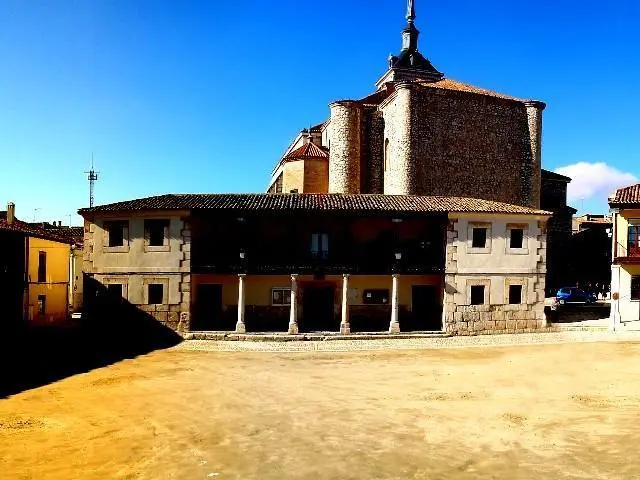
Several villages sprang up around the castle, among which was Apis Aureliae in reference to the beehives, which later became Colmenar de Oreja (from Aureliae). The castle, meanwhile, is in a strategic enclave to control the Tagus River, so it passed several times from Arab to Christian hands, until it was conquered by Alfonso VII in 1139. That same year he granted the Fuero de Oreja, which decreed the repopulation of the area and granted privileges to its inhabitants.
Shortly after, the whole area, grouped in the Encomienda de Oreja, came under the jurisdiction of the Order of Santiago. In 1440 it acquired the rank of villa, passing through it the itinerant court of the Castilian kings. In the 16th century it came under the control of the Duke of Maqueda, with whom the period of lordship of the town began, marked by urban and commercial progress.
In 1922, Alfonso XIII granted Colmenar de Oreja the title of City, which it still retains today. At the beginning of the 20th century the railroad reached the town, although in the 1940s the line ceased to be operational and today it can be traveled as part of the Tajuña greenway.
Famous quarries and other trades
Its quarries are famous, from which stone has been used for the Royal Palaces of Madrid and Aranjuez, the Royal Theater and fountains such as Cibeles and Neptuno, among others. It is precisely during the development of Aranjuez when Oreja loses its hegemony, while the real development of Colmenar begins, becoming during the 19th century the third most populated municipality in the province of Madrid.
But in addition, the locality also knew an important industrial development thanks to the ovens where the jars for wine and oil were manufactured, an activity maintained until well into the twentieth century. In 1966 there were still two production centers, while in 1979 there was only one active oven. This trade of the past is reflected today in the large ovens where the pieces were fired, which were exported throughout the peninsula and even overseas. Some of them can be seen in the town center.
Some other crafts such as working with esparto grass or making soap also stand out.
Más información: http://colmenarte.colmenardeoreja.com/
-
Chinchon in motorhome
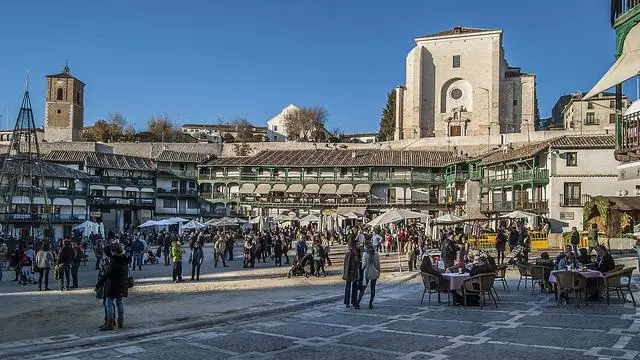
The town of Chinchón is located 45 km southeast of Madrid. Surrounded by the vineyards and olive trees of the Vega del Tajuña, its urban center was declared a Historic-Artistic Site in 1974. With its filmy Plaza Mayor, its streets full of history and a local cuisine that can be tasted in inns and restaurants... Everything that can be said about this town is an understatement. Go and see for yourself!
To situate ourselves a little in time, we will say that the origins of Chinchón go back to the Neolithic and the great civilizations that have written the history of the Peninsula have passed through its lands: Iberians, Romans, Arabs and Castilians.
The first settlers arrived in this area in the Neolithic period and lived in some of the many caves in the vicinity, such as the so-called Cueva de la Mora. Traces of an Iberian settlement have also been found in the hill of "El Salitral", while the Romans from neighboring Titulcia established their camps here.
In Arab times, Chinchón belonged to Toledo, until, in the mid-11th century, King Ferdinand I reconquered the territory between Talavera de la Reina and Madrid, which was later consolidated by Alfonso VI. But it was with Alfonso VII when Chinchón was repopulated by people coming from Segovia in search of a portion of land that was distributed in the form of "quiñones" (portions).
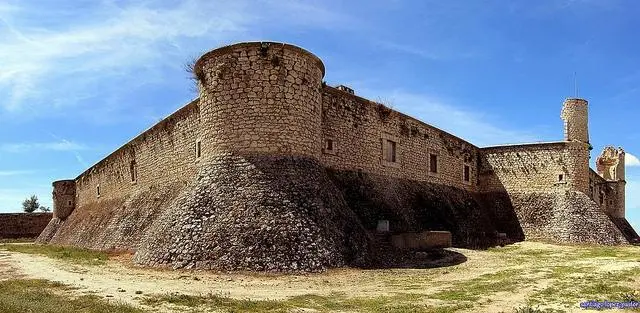
Under the reign of Enrique IV it received the title of "Villa", becoming a place of recreation for nobles and powerful people. The Catholic Monarchs appointed the Cabrera-Bobadilla couple as Lords of Chinchón, thus freeing it from the jurisdiction of the Segovian shepherds. In the middle of the XVI century the Lordship of Chinchón would accede to the title of County by concession of the Emperor Carlos V.
At the beginning of the 18th century the county was acquired by the House of Bourbon and Farnese, and the town was granted the title of "Very Noble and Very Loyal" in recognition of its loyalty in the War of Succession.
The French also passed through here, appropriating the goods kept in monasteries and convents. As an example of this in the Plaza Mayor there is the so-called "column of the French". Will you be able to find it?
Today Chinchón is a tourist attraction, an activity that combines with its dedication to the cultivation of high quality food.
Más información: Turismo Chinchón
-
Navalcarnero in motorhome
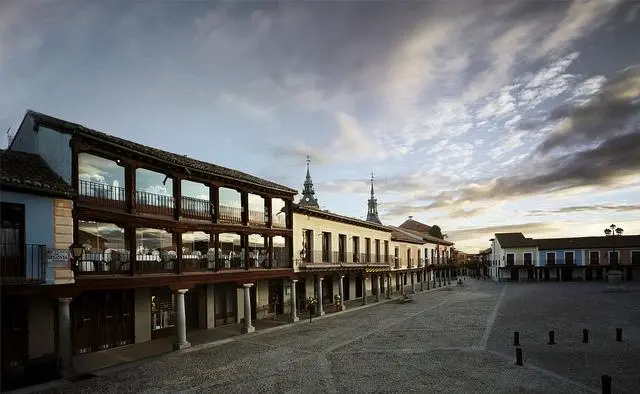
The town of Navalcarnero is located in the southwest of the Community of Madrid, between the rivers Guadarrama and Alberche. It was founded on October 10, 1499 and since then it has witnessed numerous historical events, such as the wedding of King Philip IV with his niece Doña Mariana of Austria, thanks to which it was granted the title of "Villa Real".
Más información: www.turismo-navalcarnero.com
-
San Martin de Valdeiglesias in motorhome
It offers numerous tourist attractions such as the San Juan Reservoir, the Castillo de la Coracera or the Enchanted Forest. In addition, its wines have their own sub-denomination of origin and wine tourism is another possibility.
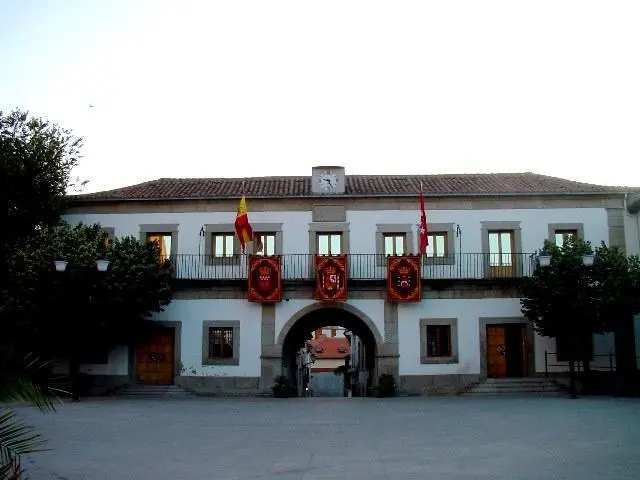
It is known for being at the foot of the Embalse de San Juan, one of the beaches of Madrid and its marina, headquarters of the Real Club Naútico de Madrid. In its surroundings you can practice different leisure activities in contact with nature, with family or friends, and its Castillo de la Coracera is part of the Network of Castles.
Historical roots in the Reconquista
The stable settlements of population in San Martín de Valdeiglesias took place with the repopulation developed with the Reconquest. In this case, the majority of the settlers were from Avila. In the repopulating process also had special protagonism the religious community that created a great number of hermitages or hermitages in the valley and, in 1150, was founded the Monastery of Santa María la Real de Valdeiglesias -in the municipality of Pelayos de la Presa-. The Coracera Castle was also built and the municipality became very important, both economically and culturally.
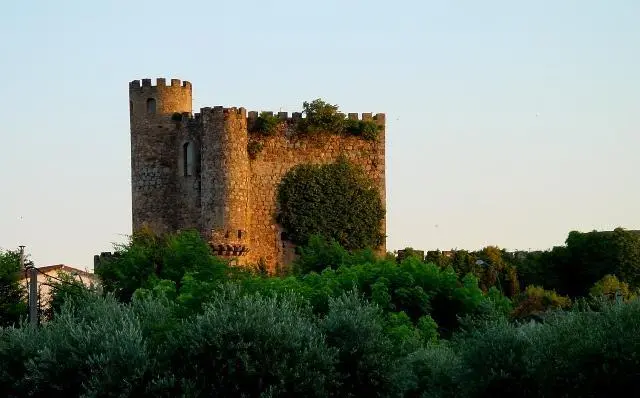
One of the first censuses made referred to 1,000 neighbors and approximately 4,000 inhabitants, something very unusual in the area. The settlers were mostly engaged in agricultural work, construction and other trades such as millers, shoemakers, charcoal makers, weavers and, later, in wine production, glass manufacturing and the service sector. In fact, the tourism and leisure sector has developed considerably since the 20th century due to the summer camps and the many tourists who come to San Martín de Valdeiglesias to enjoy its historical legacy and natural wealth.
Nestled in nature
The landscape of the municipality is valuable and has as main protagonists the rivers Alberche and Cofio, the granite -with great masses, as for example in the Canto del Guarro and El Yelmo- and the stone pines. Mammals and fish abound and the municipality has a hunting and fishing reserve. Birds are also present and are under a Special Protection Area for Birds (ZEPA).
San Martín de Valdeiglesias also offers the possibility of doing a great number of activities in contact with nature: routes on foot, on horseback or by bicycle; environmental education, orientation, multi-adventure... In the surroundings, in addition, nautical activities are available thanks to the San Juan Reservoir.
On the other hand, since its inauguration, the Enchanted Forest has become a new tourist attraction of the municipality visited by young and old. It is a fascinating botanical garden that houses 500 types of plants and 300 plant sculptures, representing forms as diverse as a dragon, an elephant or a locomotive.
A rich historical heritage
The artistic heritage of San Martín de Valdeiglesias can be seen in its castle, church and hermitages. The Coracera Castle -declared an Asset of Cultural Interest- is one of the symbols of the town and is closely related to the municipal history. It has a square floor plan, flanked by narrow cubes, and among its elements the thick pentagonal-shaped keep stands out.
The Church of San Martín is a very voluminous temple whose works began in 1634 but were never finished since only a third of the initial project was built. The plant, of basilical style, has three naves closed with barrel vaults and over the transept rises a central dome of seven meters high. In its interior the baroque altarpiece of the main altar -with an image of the Patron Saint attributed to Lucas Jordán- and the altarpiece of the Virgen de la Nueva -from the XVI century-, of the Toledan school, stand out.
Of the many existing hermitages in the area -and that gave the name of Valley of the churches "Valdeiglesias"- it is still possible to observe six: Ermita del Cristo, of small dimensions; Ermita del Ecce Homo, built in the 15th century with granite and ashlar, has been rehabilitated; Ermita de la Sangre, with a polygonal apse of three sides and buttresses presents in its interior a small presbytery with ribbed vault and semicircular arch; Ermita de la Salud, of recent construction; Ermita de la Virgen de la Nueva, erected in 1956 to replace the old sanctuary that was left under the waters of the reservoir; and Ermita del Rosario, of ashlar masonry and small proportions.
Wines with Denomination of Origin
Wine tourism is another of the attractions of the area. The municipality has seen the quality of its wines recognized with its own sub-denomination of origin, within the D.O. Vinos de Madrid. In addition to having a series of its own routes that you can consult on the website of Madrid Wine Routes, there are several wineries that are open to the public and even in the Castle itself, you can taste a glass of wine from its large selection of local wineries in its modern wine cellar, located in the Torre del Homenaje. Quite an experience.
Más información: San Martín de Valdeiglesias
-
San Lorenzo del Escorial in motorhome
San Lorenzo de El Escorial, located in the heart of the Sierra de Guadarrama, was a royal summer residence halfway between Madrid and La Granja de San Ildefonso. Thanks to this, it has a large number of monuments of that time, which today has been converted giving rise to a city full of charm, cultural atmosphere and leisure options.
For its beauty, San Lorenzo de El Escorial together with Aranjuez and Alcalá de Henares are included in the program of World Heritage of the Community of Madrid.
A place with history
Philip II fixed the site of the complex at the end of 1562 to commemorate the Battle of San Quintín, according to projects by Juan Bautista de Toledo and Juan de Herrera. The Monastery and Royal Site of San Lorenzo de El Escorial was declared a UNESCO World Heritage Site in 1984.
The visit begins at the Monastery and its surroundings
The Monastery is a place of impressive dimensions and great value. Highlights include the monumental Basilica, the Royal Pantheon where Spanish monarchs of the houses of Austria and Bourbon are buried, the Pantheon of the Infantes, the Chapter Rooms, the Library and the courtyards, which could not be missing in a summer residence worthy of kings.
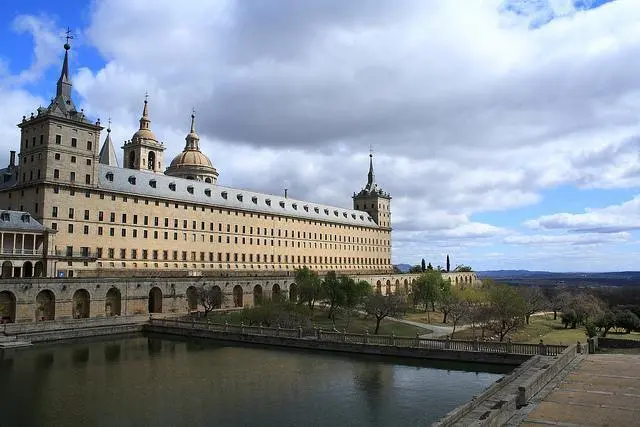
Although there are two funerary monuments in the basilica, dedicated to the families of Charles I and Philip II, the mortal remains of the monarchs are in the Pantheon of the Kings, located under the presbytery of the basilica in a circular chapel. The other members of the Royal family are buried in the Pantheon of the Infantes.
The decoration of the Monastery and of the elements that compose it was commissioned to some of the most outstanding artists of the time. You can visit the Museum of Architecture and Painting, where you will find an important collection of paintings by El Greco, Titian, Ribera, Luca Giordano, Zuccaro, Tintoretto, Veronese, Velázquez, El Bosco and Zurbarán, as well as sculptures by Monegro, Bernini and Cellini.
This Historic-Artistic Complex is completed with the Casa de los Oficios, the Casa de los Infantes and the Casa de la Reina, the Royal Coliseum of Carlos III and the Casita del Infante and the Historic Gardens of high botanical value.
Its urban layout was enriched thanks to the aristocrats and bourgeois of the capital who built their summer residences here. It is, in short, an elegant town with a rich monumental heritage surrounded by mountains and forests. Houses and small palaces are part of a rationalist urbanism that perpetuates the symmetry of the Monastery. The Palace of the Marquis of Campo Villar, the House of the Duke of Medinaceli or the House of Columns are some beautiful examples.
Nature, beyond the Monastery
Because of its uniqueness, a visit to San Lorenzo de El Escorial should not be made without having enjoyed the wonders that nature hides in places as beautiful as La Herrería and the Pinar de Abantos. Its natural values and its exceptional character, caused the declarations of Picturesque Landscape in the case of the Pinar de Abantos and Forest of Special Ecological Interest in the case of La Herrería, which guarantees its protection and conservation for future generations.
They also deserve to be contemplated and welcomed by the shadows of the magnificent trees found in the squares and gardens of San Lorenzo de El Escorial, all of which are accessible to visitors and will undoubtedly make their visit a memorable encounter with nature.
A place where a king once rested: the famous King's chair.
La Silla de Felipe II is located about two and a half kilometers from the municipality. It is said that from this natural observatory the monarch watched the development of the works of the Monastery. Apparently, a legend, since the king never got to observe the works from this enclave. Some experts say that these granite seats, for the king and two companions, are the remains of an ancient Celtiberian altar.
From here you can see that the monastery is shaped like an inverted grill, in homage to San Lorenzo, who was martyred on one of them back in 258.
If you work up an appetite...
In San Lorenzo de El Escorial you can also savor the authentic Madrilenian and mountain cuisine. Snails, potato omelette and sausages will serve as appetizers. Cocido madrileño (chickpeas, meat and vegetables), tripe and garlic soups are rooted in the purest Castilian tradition.
Among the main courses, the veal from the Sierra de Guadarrama is served grilled, while the lamb and suckling pig are prepared in the oven. Sea bream and cod are the preferred fish of the central zone. And for dessert, rosquillas de anís, canutitos de crema or mantecados.
This varied gastronomy can be tasted in the restaurants, bars, cafeterias and terraces that flood the streets and small squares of this town.
What to do among palaces?
The current Euroforum, where the Summer Courses of the Complutense University of Madrid are held, was once the House of the Families of Infantes. Remodeled several times over the centuries, it holds the title of Historic-Artistic Monument, and at that time of the year houses a large number of students.
Throughout the year and continuously, exhibitions of great artistic and cultural interest can be seen. The musical, theater and dance performances in the Auditorium Theater are a reference for lovers of the arts.
Do not forget to visit the Interpretation Center where you will be shown the most representative aspects of the history, nature and culture of San Lorenzo; and the Carriage Museum, where you will feel like a traveler from another era.
You can join the town in the Pilgrimage of the Virgen de Gracia, declared a Festival of National Tourist Interest, or in the Travesía de las Cumbres Escurialenses, a fantastic journey of approximately 22 kilometers through the four peaks that surround El Escorial.
For golf lovers, San Lorenzo offers the privilege of practicing golf surrounded by this spectacular environment.
El Valle de los Caídos
Located a few kilometers from the town of San Lorenzo de El Escorial, is located the Valley of the Fallen. It has a basilica carved into the rock with a length of 262 m. and a maximum height of 41 m. Above it is the 150 m. high cross (built of concrete and granite), which is visible from several kilometers around.
Más información: Turismo San Lorenzo
-
Cercedilla in motorhome
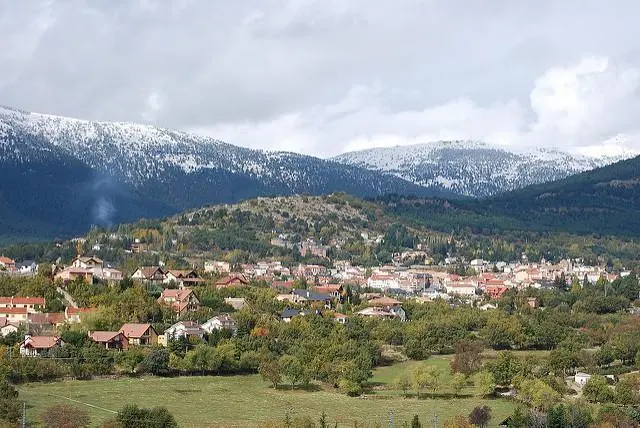
The Roman presence in the area is proven by the Roman road that crosses the Puerto de la Fuenfría, while its beauty and natural wealth made it a stop for the Royal Court on its way from La Granja to Madrid. Ideal for outdoor activities.
The first direct references to Cercedilla are found, in the 16th century, in works by Ferdinand Columbus, Miguel de Cervantes and Francisco de Quevedo. Even so, the Roman presence in the area is proven thanks to the Roman road that crosses the Puerto de la Fuenfría. The exceptional beauty of Cercedilla and its natural wealth made it a stop for the Royal Court on its way from La Granja to Madrid and vice versa until the opening of a new road through Navacerrada. Another important milestone in the history of the municipality was the arrival of the tres in 1888, which meant a boost in all areas for the town.
The first inhabitants were engaged in agricultural work, timber production and livestock farming, which also had three livestock trails and elements such as the horseshoeing colt and the tentadero. There were also flour mills and several stores. The development of Cercedilla and its privileged geographical location have turned the town into a place for tourism, recreation and summer rest for many people, as well as the headquarters of sports, cultural and scientific associations. The municipality is also home to the Puerto de Navacerrada, a strategic point of communication between the plateaus and a reference point for outdoor activities and skiing.
The natural wealth of Cercedilla is enviable, with abundant water and varied flora and fauna that have a magnificent representation in the Fuenfría Valley. Pine is the most important tree species, although there is an oak forest of immense value, and there are also poplars, holly, broom, yew, rowan, juniper, heather, bushes and pastures. Mammals, birds, insects, reptiles and amphibians are the main animal species. Cercedilla offers the possibility of enjoying nature thanks to the existing viewpoints and routes in the municipality.
The artistic and cultural heritage of the town is very remarkable. In addition to the Roman remains such as the road and bridges, there are also religious buildings such as the Church of San Sebastian and the Hermitage of Santa Maria -from the seventeenth century and showing the popular architecture-. The Church, of late Romanesque origin, is a free-standing building with a Latin cross plan and a single nave. In its interior there is a Churrigueresque altarpiece of 1612 that decorates the head of the church.
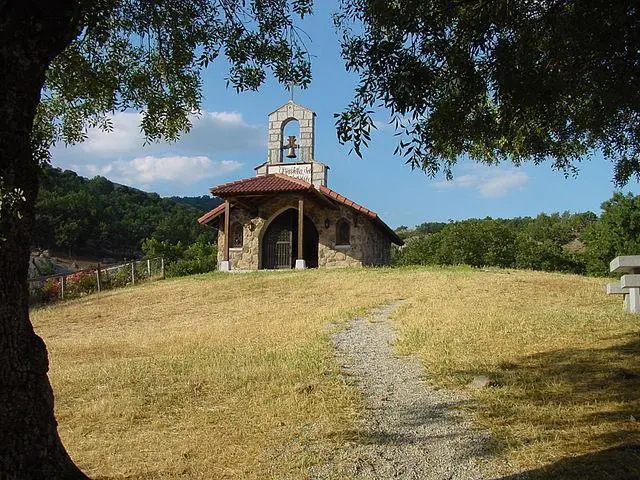
In Cercedilla there are also relevant buildings from the late nineteenth and early twentieth centuries, among which are the Summer Colonies, the Railway Station, the Fábrica de la Luz, the Sanatorio de la Fuenfría, the Club de Mayores and the Plaza de Toros.
Más información: www.cercedilla.es
-
Manzanares el Real in motorhome
The Castillo Nuevo or Castillo de los Mendoza is the best preserved of the Community of Madrid. Enjoy its natural environment with routes on foot or by bicycle and activities such as climbing. From here you can reach La Pedriza del Manzanares.
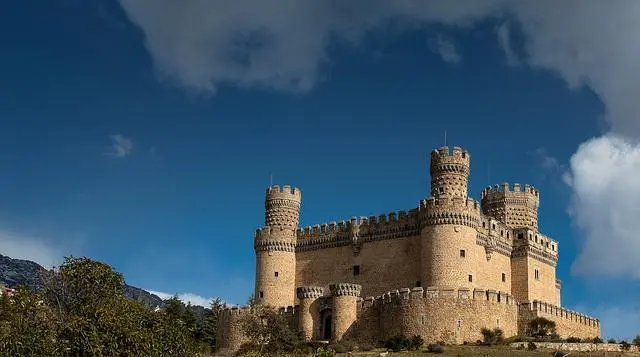
The archaeological remains found in Manzanares El Real have made it possible to determine human presence since prehistoric times. It is also known that Romans, Visigoths and Muslims established settlements before shepherds from Segovia founded, during the Reconquest, the current Manzanares. As with other towns in the region, there were territorial disputes between Segovians and Madrileños. At the end of the 14th century, Juan I ceded the lands of Manzanares to Pedro González de Mendoza, but they passed into the hands of other nobles until they returned to the Mendoza family in the 18th century.
The inhabitants were dedicated, fundamentally, to agriculture - there were three flour mills - and to cattle raising - which had, in addition, a score of cattle trails. Between the nineteenth and twentieth centuries there were some changes in the trades since a continuous paper factory was installed -one of the first in Spain- which reactivated the economy. In addition, the tertiary sector gained strength to the detriment of traditional activities and the construction of the dam also had an impact. During the second half of the 20th century, the service sector became even more important and tourism developed considerably. The population even increased as second homes were established in the town.
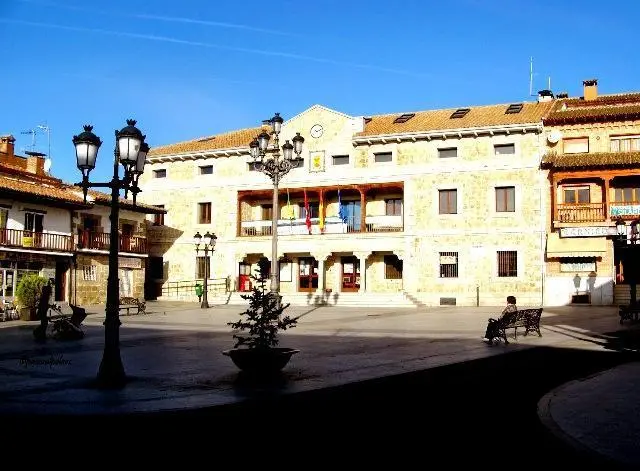
Natural Heritage
Nature in Manzanares El Real is outstanding and the presence of water is outstanding. In addition to the reservoir, which occupies a maximum surface area of 1,044 hectares, the Manzanares River and more than 25 streams flow through the municipality. As for flora, there are mainly forests of pines, oaks, cork oaks, holm oaks, rockroses and junipers. The animals that inhabit these lands are mainly mammals, birds, insects, reptiles and fish. One of the most outstanding natural places in Manzanares is La Pedriza, where granite rocks polished by erosion and the passage of time have left an image full of color and impressive shapes. The natural environment is an invitation to get to know it through routes on foot or by bicycle and activities such as climbing.
Historical Heritage
In Manzanares El Real could not miss the artistic and cultural heritage. The New Castle or of the Mendoza is the main exponent and is the best preserved of the Community of Madrid. It dates from 1475, has a square shape and consists of three round towers and one octagonal. The castle also has an arcaded courtyard, a basement and six more floors. In the rest of the building there are different rooms that have been converted into a library, an exhibition hall, a conference room, as well as a museum of Spanish castles.
Other examples of Manzanares' heritage include: the Old Castle -of which there are some remains of the walls, which could date from the 14th century-; the Church of Nuestra Señora de las Nieves -presents a mixture of architectural styles, with the Romanesque nave, the sacristy is covered with Gothic ribbing and the portico is purist Renaissance-; the Cave Paintings of Los Aljibes -from the Bronze Age and representing 28 anthropomorphic figures in movement-; the Hermitage of Nuestra Señora de la Peña Sacra -from the XVI century and related to Druid and Celtic cults-, and the Old Bridge -from the XVI century-.
Más información: www.manzanareselreal.org
-
Rascafría in motorhome
Located in the northwest of the Community of Madrid, in the wonderful landscape of the Lozoya Valley, Rascafría is one of the most beautiful villages of the sierra. The valley is wide and clear, located at an altitude of 1100 meters, and is perfect for nature lovers.
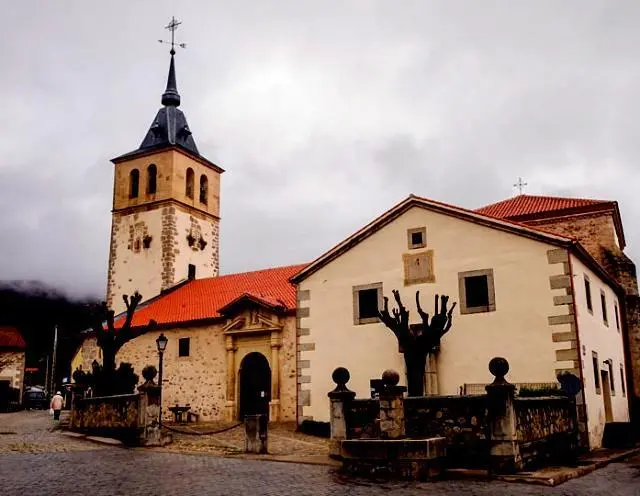
Along with ten other tourist towns in the Community of Madrid, Rascafría is part of the Villas de Madrid program, get to know them and enjoy the promotions and discounts offered by the different points. What are you waiting for to visit them all!
Monastic life
Rascafría stands out since its foundation for the imposing Monastery of Santa María del Paular, which seems to stand in the middle of the landscape as if it should be there, perfectly integrated and blended with the surrounding nature.

Founded in 1390, it was ruled for more than 450 years by the order of La Cartuja. However, from 1954 to the present, it has been a Benedictine abbey. Henry II of Castile ordered its construction, in a location chosen by himself. Legend has it that the monarch decided that it belonged to the Carthusian order because during the war years before, his army had burned a monastery of the same order in France.
At the beginning of the 17th century, the famous painter Vicente Carducho was commissioned to paint a series of pictures about the life of the founder of the order, Saint Bruno of Cologne, for the 54 hollows of the interior walls of the monastery. However, after the disentailment of the 19th century, the paintings were distributed to museums and other institutions. However, thanks to the initiative of the people of the village among other promoters, in 2006 the works were restored to the walls of the monastery. In addition, we remind you that at present the monks still occupy a part of the monastery, the one to the left of the church.
From the Puente del Perdón, the view of the Monastery is wonderful! Its name comes from the fact that, given the relative isolation of the Lozoya valley, the local authorities used to hold their trials next to the bridge.
Let's go to the village!
Heading towards the village, we will stop at the Plaza de los Trastámaras, built in conjunction with the Casona. Did you know that this old building was originally a Hospital or "Lazareto"? Well, this two-story building with orchard and garden, later became the stately home it is today.
You can't miss the neo-Mudejar style Town Hall, which was built at the beginning of the last century and renovated in 1984. In addition, it is located in the Plaza de la Villa and very close to here we can find the monumental Parish of San Andrés Apóstol.
This 15th century building is located at the northern end of the town and preserves some Gothic vaults and coffered ceiling from the 16th century in its central nave. Its pulpit is Plateresque and preserves several sculptures from the Paular, such as an 18th century St. Michael the Archangel, the work of Luis Salvador Carmona.
During the civil war, its spire was hit by a shell and the bells also disappeared during the conflict. And perhaps the most curious fact is that the new bells were built with the metal of two airplanes that crashed in the mid-twentieth century.
And also...
In the presbytery of the Church of San Andrés plays and performances and events of cultural and recreational character are represented.
There is a great multitude of cultural activities that take place in the Corral de Comedias, such as the Folk Festival of the Sierra Norte, nationally recognized. It takes place in the natural space of "Las Presillas", on the banks of the Lozoya River. Artists of the stature of Carlos Núñez, Hevia or Celtas Cortos, among others, have attended and participated in this festival which is worth attending.
Are you hungry?
One of the best times to visit Rascafría are the months of October and November, coinciding with the Gastronomic Days of Mushrooms, Hunting and Wine.
Also throughout the year, restaurateurs offer a selection of the best recipes prepared with natural ingredients that occur in the forests. All marinated with the best wines of 'Denominación de Origen Vinos de Madrid'. When it comes to choosing where to go, you will have no problem, since the number of cozy restaurants in Rascafría is quite large.
Nature in its purest state
Although the offer of natural tourism in Rascafría and its surroundings is very wide, we recommend that you choose one of the "Green Routes" as the one that starts from the Puente del Perdón, a pleasant path that leads to the Arboretum Giner de los Ríos, a botanical garden on the banks of the Lozoya River. It has a representation of trees and shrubs of deciduous forests with more than 200 species, separated according to areas of origin, from Asia, Europe, North America and South America. The tour can be done on foot or by bicycle.
You can also go to the Natural Park of Peñalara, one of the most valuable places in the Community of Madrid. In its interior is the highest peak in the region and there are species of flora and fauna of great value. Enjoy your surroundings and get away from the modern world for a few moments.
And if adventure is your thing, you can't miss the Valdesquí slope, which has everything an experienced skier could wish for, from ski and snowboard slopes to a training and competition slope that can be rented.
Don't forget the popular festivities
The calendar of Rascafría is plagued with a multitude of festivities. From the most solemn religious processions to the most exciting ribbon races on horseback. If you like to enjoy good food outdoors, don't miss the festivity of La Virgen de Gracia and San Roque, which could be called the main festival. It is held in mid-August and features parades, heifers, sports competitions, musical performances, caldereta, chocolatada and children's contests.
In addition, to enjoy the folklore of the region, a visit to the Virgen del Rosario is a must. It takes place at the beginning of October, in Oteruelo del Valle. Religious events, aperitifs, contests, cultural exhibitions and popular dances are organized.
Más información: www.rascafria.org
-
Buitrago de Lozoya in motorhome
Fortified village and castle of Buitrago de Lozoya. Its Castle or Alcazar, which does not follow the predominant model of stately castle of the time, along with the Church of Santa Maria del Castillo, the Clock Tower and the wall give a medieval air to this municipality, which boasts a cultural agenda so active that has proposals for the four seasons.
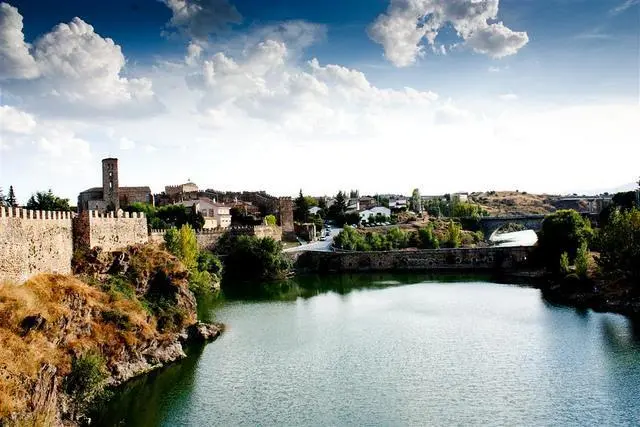
A walk through the Middle Ages
Both the castle and the walls have been preserved almost in their entirety because, due to their solidity, they have been given other uses, thus saving material. Thus, the walls served as a support for modern houses, while the castle was transformed into a bullring. In fact, today the stands of the square still occupy the space formerly occupied by the rooms of the castle, and the courtyard hosts concerts in summer.
The best way to appreciate the whole is to begin the tour by the Arrabal Bridge, from where you can enjoy the widest view of the entire fortified enclosure. In this outer area is where the peripheral burghs were located, inhabited by the poorest peasants and artisans whose workshops, for reasons of hygiene, had to be "outside the walls", as well as inns and inns. Once inside the enclosure be sure to see the Clock Tower, walk along the wall and visit the Church of Santa Maria del Castillo.
A unique castle
Thanks to its recent restoration and archaeological excavations, remains of the original barrier and moat have been recovered. Unlike other stately castles, this one does not have a keep where protocol acts can be held and its design places it closer to the urban fortress of the Andalusian tradition, comfortable and surrounded by a defensive belt. Also typical of Andalusian architecture are the bricks, which are predominantly used in its construction.
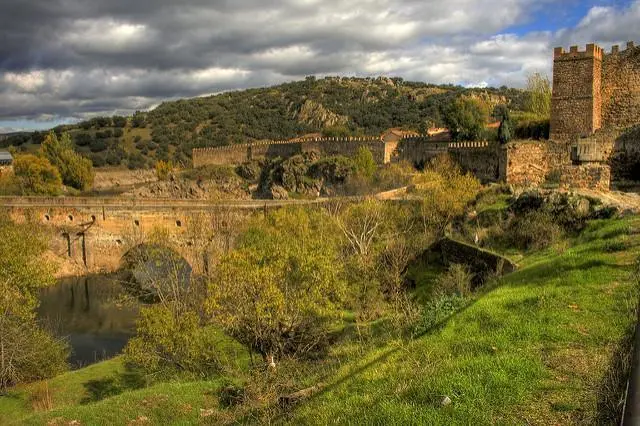
One of the most characteristic structures of this castle is the coracha, an arm of the wall that went down to the river to protect the bridge and that when observing it gives us the feeling that the castle extends to the Lozoya. Today, it has an arch under which a street passes, although neither existed in medieval times. For its part, the bridge that is of possible Roman origin, today is not visible because it is under the waters of the reservoir.
Más información: Buitrago del Lozoya
-
Horcajuelo de la Sierra in Motorhome
Its dark stone buildings form a set of enormous beauty, constituting one of the best examples of rural architectural ensemble throughout the Community. Visit its Ethnological Museum.
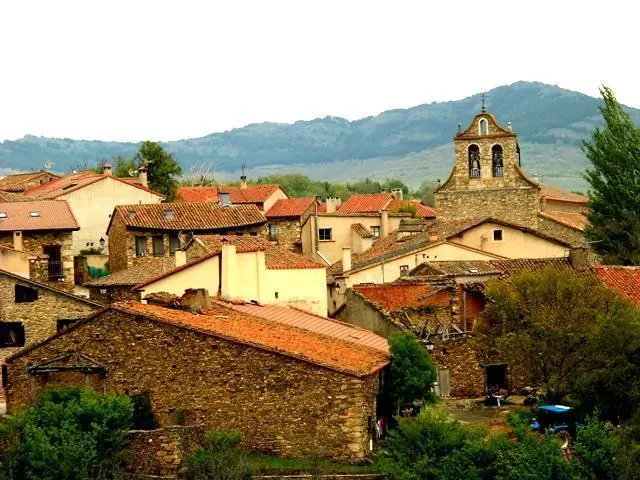
Horcajuelo de la Sierra has one of the best examples of rural architectural ensemble of the entire Community of Madrid. With a special sensitivity on the part of its inhabitants for the conservation and restoration of the legacy of their elders. Its dark stone buildings form a set of enormous beauty. Some of these examples are in the Ethnological Museum, as well as a forge that is completely restored. Do not forget the Church of San Nicolás de Bari. Visit Horcajuelo de la Sierra to check it out.
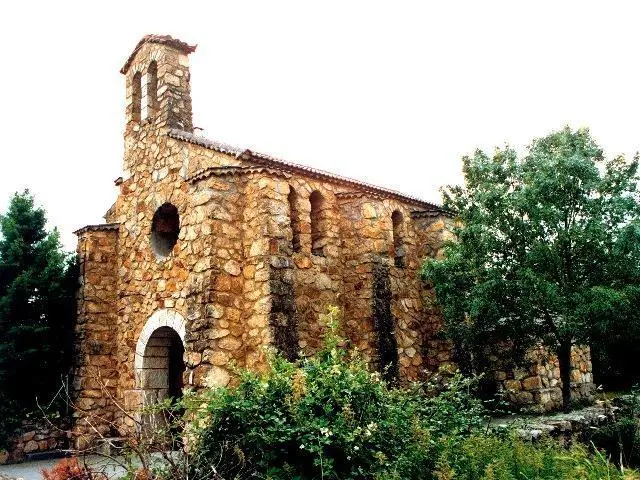
But Horcajuelo stands out for its integration with Nature, thanks to its privileged location in the Sierra del Rincón being part of the Biosphere Reserve declared by UNESCO, with a wide range of free trails, although if you have the possibility we recommend that you book the visit, access the page www.sierradelrincon.org so you do not miss it.
If you prefer to practice hiking in a quieter way, we recommend some routes through the municipality, the Camino de Nuestra Señora de los Dolores (which takes about 25 minutes), the Camino de Pilillas that takes you to an old mill (8 km long) or a route along the cattle trails (which takes about 40 minutes). Come and enjoy with family or friends.
Más información: Conoce Horcajuelo de la Sierra
-
La Hiruela in motorhome
t is one of the best preserved villages in the Community of Madrid, since its houses of stone, adobe and oak wood from the pasture, have hardly been modified since its construction.
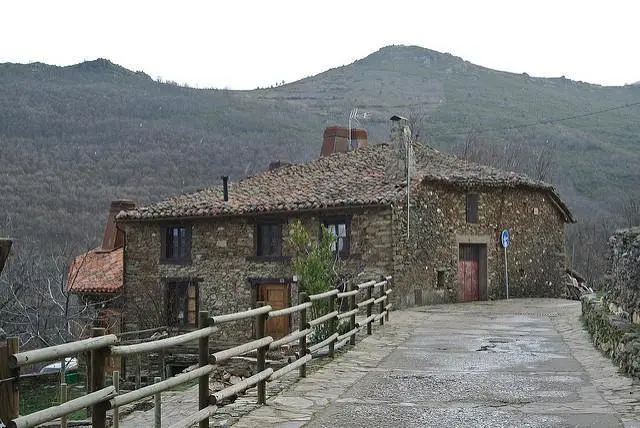
La Hiruela is a privileged enclave in the Sierra del Rincón. Its houses made of stone, adobe and oak wood from the pasture have hardly been modified in their structure since their construction, which gives La Hiruela an architectural identity of its own that places it as one of the best preserved villages in the Community of Madrid. Some of the protected traditional buildings and elements are the pylon, the flour mill on the banks of the Jarama River, the Town Hall and the old school, the latter now transformed into a social bar, the Casa del Cura and the Casa de la Maestra.
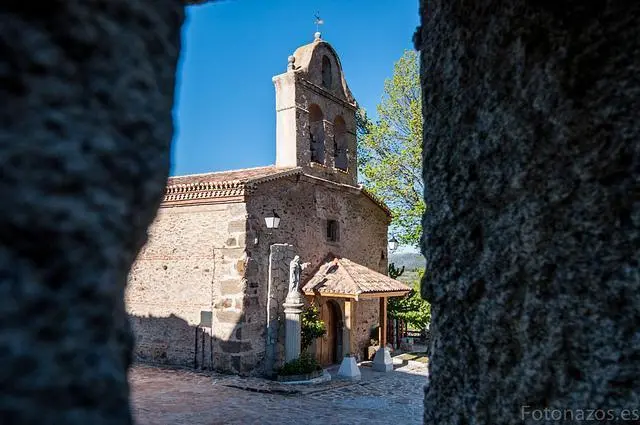
The extraordinary location of La Hiruela will allow you to hike incredible trails through forests, streams and pastures. In addition, you can visit medieval villages such as Buitrago, the lush forests of the Hayedo de Montejo or the spectacular valleys of La Puebla.
La Hiruela, along with the other 4 municipalities that are part of the Sierra del Rincón, were listed as a Biosphere Reserve by UNESCO, in 2005 it was internationally recognized within the Man and the Biosphere Program, thus placing it within the global network of Biosphere Reserves. We recommend that you book your visit at www.sierradelrincon.org so you don't miss it.
So take a walk around the village, book your pass to the Biosphere Reserve or walk the trails around La Hiruela, we recommend the Robledal de La Hiruela where you will find charcoal pits where charcoal was once made.
La Hiruela offers you modern accommodations and restaurants where the traditional and the modern merge in rehabilitated buildings that will immerse you in the atmosphere of the Sierra del Rincón, one of the most picturesque places in the Community of Madrid. Visit it!
Más información: La Hiruela
-
Puebla de la Sierra in motorhome
Its particular microclimate creates conditions that favor one of the greatest diversity of flora and fauna in the Community. In the recreational area of Los Avellanos you can enjoy activities in contact with nature.
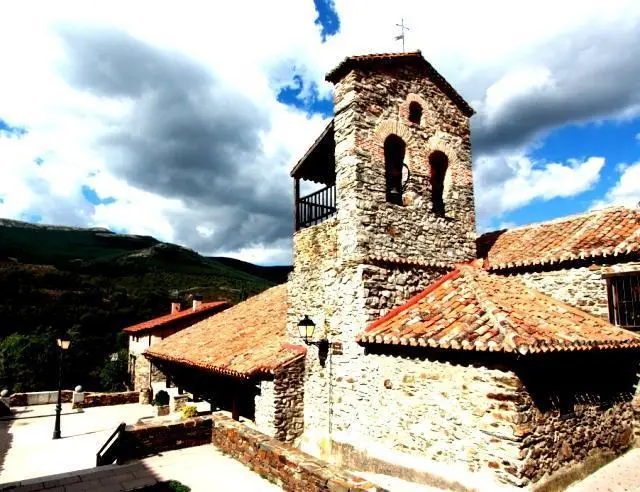
This natural wealth can be contemplated while walking along one of the four existing trails, while cycling or while participating in an environmental education activity.
Puebla de la Sierra is part of the Biosphere Reserve, whose ecosystems aim to demonstrate a balanced relationship between humans and the biosphere by contributing to the conservation of landscapes, ecosystems and genetic variation as well as sustainable economic and human development from the socio-cultural and ecological points of view. We recommend that you book your visit at www.sierradelrincon.org so you don't miss it.
Outside the Biosphere Reserve, but in the middle of nature, I would not miss the Valley of Dreams. It is an open-air sculptural itinerary, inaugurated in 2006 and currently made up of more than 30 works of art donated by local artists who sponsored the idea. It is a project that aims to make this natural spot a unique, almost magical environment.
If you are traveling with your family, you can take a break in the Hazelwoods Recreation Area, where nature-related activities take place.
Take a stroll and immerse yourself in the village and see buildings such as the tinados, mills, the forge or the old fountain that served as water for the neighbors. Stop at the Church of the Immaculate Conception and continue to the outskirts to the Hermitage of Nuestra Señora de la Soledad to contemplate the charm of this corner of Madrid.
Más información: Web oficial de Puebla de la Sierra Turismo
-
Patones in motorhome
The "Little Kingdom of Patones" offers pleasant walks, places to eat and sleep, hiking and cycling trails, exhibitions and guided tours, archaeological sites and an extensive architectural heritage.
Patones, a kingdom, a village. The "Little Kingdom of Patones" offers pleasant walks, places to eat and sleep, hiking and cycling routes, exhibitions and guided tours, archaeological sites and an extensive architectural heritage. We invite you to discover one of the most picturesque villages in Spain, which was declared an Asset of Cultural Interest in 1999.
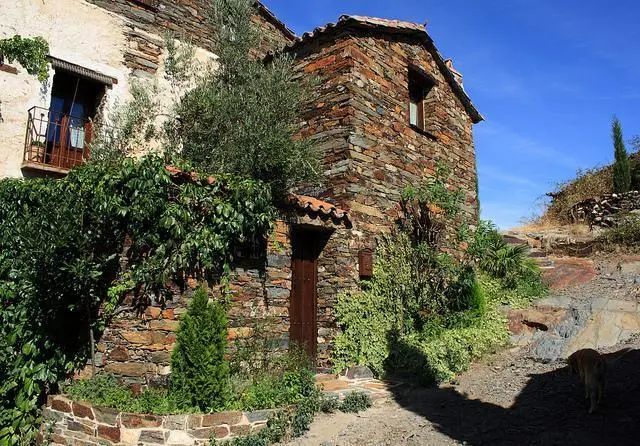
The charm of Patones de Arriba is a mixture of historical tradition and the discovery of archaeological remains from the Iron and Bronze Ages in the Cueva del Reguerillo de Patones. You can enjoy caving and climbing in this area of great geological value.
Although its fame is due to the legend of the "King of Patones", based on the visit made by the King to Cardinal Moscoso when he passed (1653) by Torrelaguna to ask him to build a chapel in the village. The King was a kind of mayor or Justice of the Peace, and as the classic documents say, he would be an old man who administered justice among the neighbors. It is said that when King Carlos III addressed these characters he was referring to the king of Patones.
In the 19th century Patones increased its legend during the War of Independence, which, according to legend, had not affected the town. It was thought that due to its location it had been hidden and had not been seen by the French, although documents show that this is not true.
You can start your visit in Patones de Abajo, visit the Museum of the geological classroom, which is part of the Open Museum of the Commonwealth of El Atazar. It is located in an old Canal de Isabel II's old cellar, which has been restored in a place of extraordinary geological value. Outside the museum, we can observe a collection of representative rocks of the Sierra Norte.
After the visit to the museum, you can go up to Patones de Arriba by the ecological path of El Barranco, a path of only 750 meters in which as we gain altitude we can enjoy a breathtaking landscape.
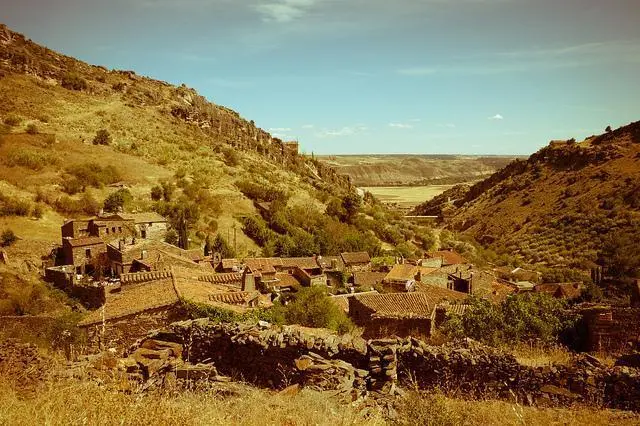
Strolling through the streets of Patones you will discover an open-air slate museum, the Old Church of San José (which is now the tourist office) provides information on two tours that you can take while you look at the most unique buildings.
Surely you have made hungry, enjoy the typical Castilian food in one of the restaurants of Patones de Arriba, is one of the corners of the Community of Madrid that have become famous for its gastronomy.
Another possible plan is the Cabarrús Canal, with a length of 13 kilometers runs through the towns of Patones, Torremocha and Torrelaguna that runs parallel to constructions made by the Canal de Isabel II.
Más información: www.patones.net
-
Torremocha del Jarama in motorhome
The toponymy seems to derive from one of the towers that existed in the region and that were demolished by order of the Catholic Monarchs. Stroll through its streets, walk through its surroundings, observe elements of its hydraulic tradition and breathe its pure air.
The origin of Torremocha de Jarama seems to be in a Roman settlement in what is known as torreotón. Even so, it was not until the Middle Ages when there was a stable settlement by shepherds from the Villa de Uceda, to which Torremocha belonged jurisdictionally until 1812.
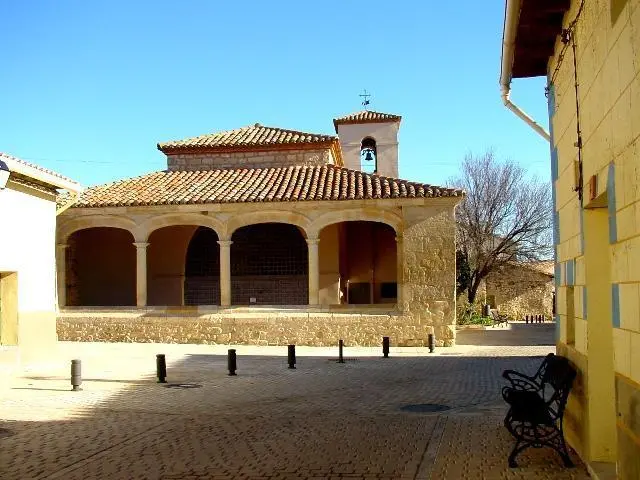
Agriculture was very productive in the municipality and the inhabitants cultivated mainly vegetables, fruits, cereals and legumes. In recognition of the importance of this activity, a Museum of Agriculture has been created where it is possible to observe tools and learn about the agricultural process. Livestock - goats, sheep and pigs - and beekeeping - with high quality honey - were also common. At present, part of the traditional route of the cattle trails that run through the municipality is still preserved: the Calerizas cattle track, the Araguz and De la Fábrica cattle trails and the De la Huerta Verde cattle track. The hydraulic engineering works developed by the Canal de Isabel II in the municipality also generated jobs, although some lands were damaged.
The urban architecture is mostly traditional, with examples of mixed housing and agricultural outbuildings. Brick, stone, wood, adobe and Arabic tile were used for their construction. The openings were very functional and there was an abundance of plastered houses.
The most outstanding example of the artistic heritage of Torremocha de Jarama is the Church of San Pedro Apóstol. This is from the 16th century with an arcade, the staircase leading to the tower with sgraffito from the 16th century and the mural paintings from the 14th century.
In addition to a walk through the streets of the town center, it is advisable to walk around to be in contact with nature and observe some of the elements of the hydraulic tradition.
Más información: www.torremochadejarama.org/
-
Torrelaguna in motorhome
Walk through its streets to contemplate its historical and cultural richness, which was recognized with the declaration of Historic-Artistic Site. Cardinal Cisneros, San Isidro Labrador and his wife, Santa María de la Cabeza were born here.
Archaeological remains have been found that show the prehistoric, Celtiberian, Roman, Visigothic and Islamic presence in the municipality. With the Reconquest, Torrelaguna was incorporated into the domains of the archbishops of Toledo and began to develop as a town. The toponymy seems to refer to a tower that formerly stood over a lagoon or in the vicinity of it. Currently, Torrelaguna is the most populated municipality in the Sierra Norte de Madrid.
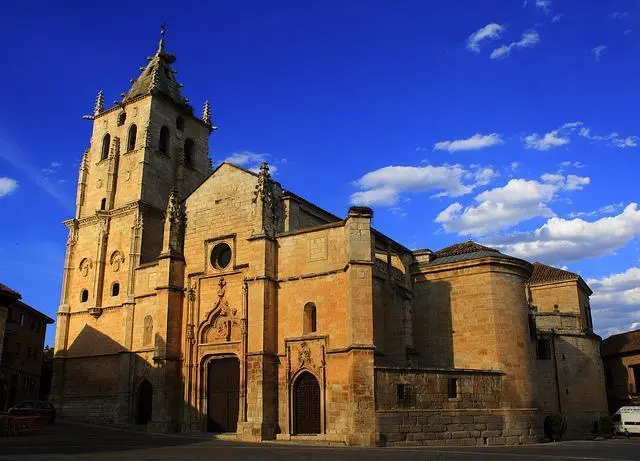
It is possible to walk through the streets of the town while contemplating its historical and cultural richness, which was recognized with the declaration of Historic-Artistic Site in 1974. Much of this is due to the many illustrious people who were born or lived in this town. Among them, Cardinal Cisneros, San Isidro Labrador and his wife, Santa María de la Cabeza, stand out.
Cisneros made Torrelaguna achieve great splendor thanks, mainly, to the construction of a granary -current City Hall- and to the foundation of the Hospital of San Bartolomé and of a Convent of Franciscans of the Mother of God. It also took care of part of the works of the Church of Santa María Magdalena, which began in the 15th century, the oldest part being the chancel.
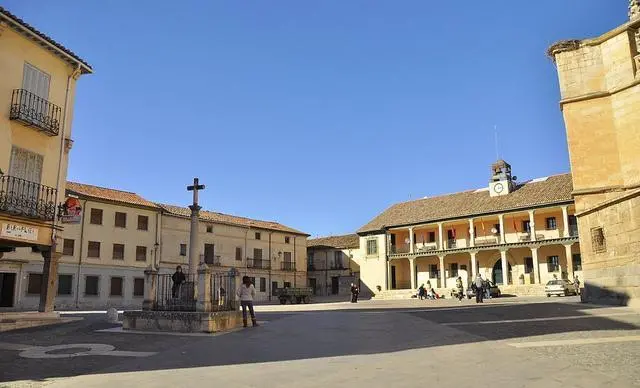
The church is one of the great landmarks of Torrelaguna, is erected in limestone masonry and covered with curved tile. It presents Madrilenian Gothic architecture, basilica plan divided into three naves of five sections, as well as a majestic tower with three bodies topped by a spire. Inside there are five side chapels -with Baroque or Plateresque altarpieces-, three apses, a Renaissance choir and the altarpiece of the temple, from 1752.
More examples of the abundant heritage of Torrelaguna are: the Convent of the Carmelitas de la Caridad, from the 19th century and where its neo-Gothic church stands out; the Antiguo Hospital de la Santísima Trinidad -from the 10th century, currently used as Casa de la Cultura-; the Abadía de las Concepcionistas Franciscanas Descalzas -reconstructed in 1960-; the Palace of Salinas -renaissance and currently houses the barracks of the Civil Guard-; the Arteaga Palace -classicist style-, the defensive walls of the fourteenth century, which are still visible in some places; the watchtower of arrebatacapas -watchtower of 12 m. of height and 19 m. Of perimeter built with masonry and mortar mixed with stones; and the hermitages of Nuestra Señora de la Soledad, San Sebastián and San Miguel Arcángel.
The municipality is crossed by nine cattle trails, the Jarama River and numerous streams and supply canals of the Canal de Isabel II. There are seven of the latter, the oldest of which is the De la Parra, dating from 1853. The natural environment of the municipality is varied, with outstanding examples of holm oaks, gall oaks, rockroses, brooms, bushes and riverside vegetation - poplars, willows, poplars... The predominant fauna includes a large number of birds -including birds of prey-, mammals -among them roe deer, wild boars and genets-, amphibians and reptiles. In addition to the cultural routes through the town, it is recommended to enjoy walks and horseback riding to be in contact with nature.
Más información: www.torrelagunaweb.es
-
Talamanca de Jarama in motorhome
Today it preserves a rich artistic heritage as a result of its historical development: a tower and part of the Arab wall, the Apse of Miracles, part of a Romanesque-Mudejar church from the thirteenth century and the medieval bridge of Roman origin.
Talamanca de Jarama has great archaeological wealth that shows the human presence in its lands for thousands of years. Remains have been found from the Iron Age and from the Roman, Visigothic and Medieval periods.
Talamanca was a strategic place during the Muslim domination and later Christian reconquest. In fact, there are documents that indicate that the municipality was founded in the ninth century by Arabs and experienced clashes and repopulation until the eleventh century was incorporated into the Christian territories. At the end of the 12th century, Talamanca was destroyed by the Arabs and was founded again at the beginning of the 13th century. Subsequently, the population changed owners and was under different dominions until the abolition of the lordships in the nineteenth century.
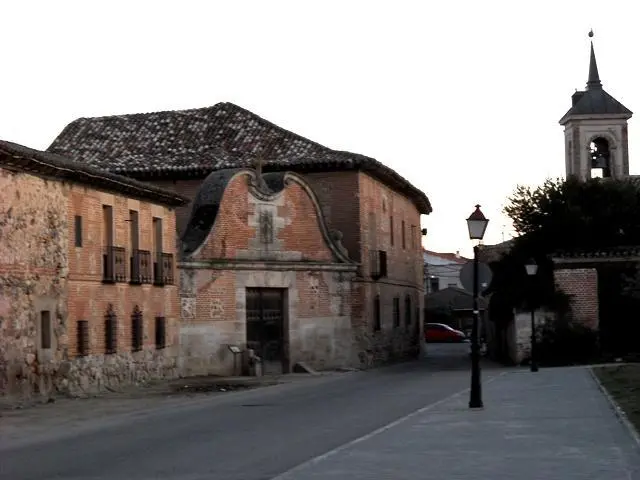
The municipality is located in the foothills of the Sierra de Guadarrama and in the valley of the Jarama, a river that together with the Valdejudíos stream are the two main watercourses of the municipality. The inhabitants are mostly engaged in agriculture -cereals, vegetables, vines, olives...- and livestock, although there is also commercial and industrial activity. The tertiary sector and construction have become important since the second half of the 20th century. New buildings and second homes have been constructed, although the traditional character of the municipality is still maintained with the presence of rural dwellings and agricultural and livestock buildings.
Historical and artistic heritage
The historical events that occurred in Talamanca have also given rise to a rich artistic heritage: a tower and part of the Arab wall are still visible; the Apse of Miracles, the only existing remains of a Romanesque-Mudejar church from the 13th century; and the medieval bridge of Roman origin.
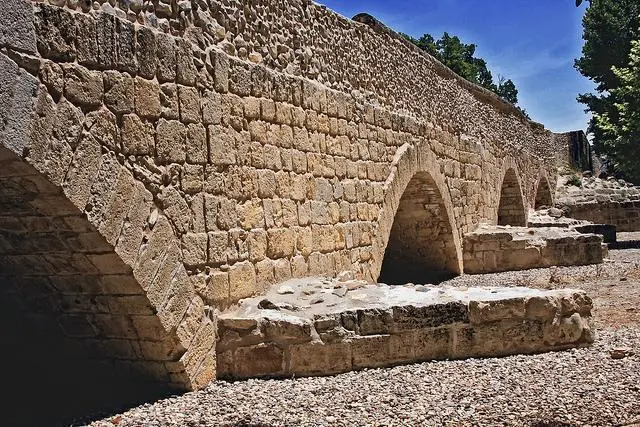
Located in the Plaza Mayor of Talamanca and popularly known as "Morabito", the Apse of Miracles is the only thing that has survived from the original church. It stands majestically in the middle of the square and looks modern because of the brick used in its construction, however, it dates from the 13th century. It is worth a visit.
Another patrimonial example is the Parish Church of San Juan Bautista, built between the 13th and 16th centuries. It is a building with three naves -one central nave and two very narrow side naves- and a three-bay tower with a spire. On the outside, the Romanesque apse stands out, and inside, the Romanesque baptismal font and the Gothic holy water font are of special value.
Más información: Talamanca de Jarama
FURGOCASA
Want to hire one of our Campervans?
Do it with the best motorhome rental company in Madrid.
Check our rates and conditions.
MADRID - MURCIA
Te esperamos!!
 Inglés
Inglés  Español
Español 
